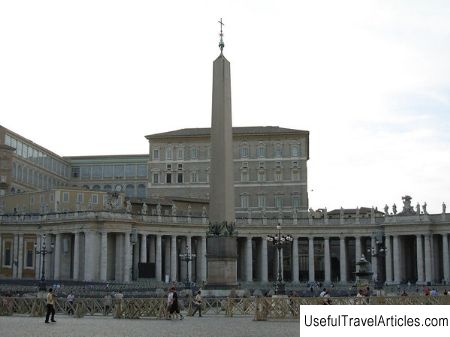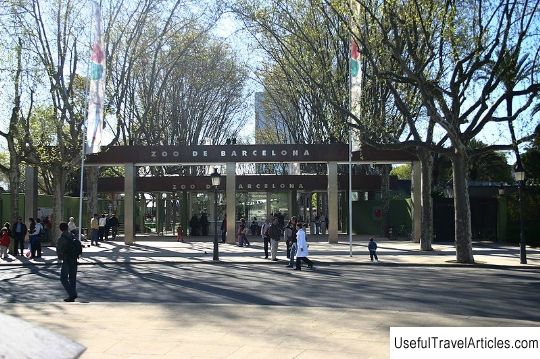Palace of Vatican description and photos - Vatican: Vatican
Rating: 8,4/10 (790 votes) 
Palace of Vatican description and photos - Vatican: Vatican. Detailed information about the attraction. Description, photographs and a map showing the nearest significant objects. The title in English is Palace of Vatican. Photo and descriptionThe Vatican palaces form one of the most magnificent monumental architectural complexes in the world. Their construction began in the 14th century with the aim of creating a papal residence worthy of their high status. The original residence of the popes was in Lateran, then it was transferred to Avignon. Gregory XI was the first pope to settle in the Vatican; his successors continued to expand and improve the palace complex. So, under Pope Alexander V in 1410, a `` corridor '' was built that connected the palace with the castle of Sant'Angelo. But the greatest contribution to the construction and formation of the complex of luxurious palaces was made by Pope Nicholas V. The heart of the complex is no doubt the square building that surrounds Pappagallo's (parrot's) Yard, which was created by such famous architects as Leon Battista Alberti and Bernardo Rossellino. The Niccolina Chapel, dedicated to St. Stephen and St. Lorenzo, is decorated with frescoes by Fra Angelico. The world famous Sistine Chapel was created in 1473-1480 under Pope Sixtus IV. Its author was the architect Giovanni de Dolci, who used the former Palatine Chapel for this purpose. Pope Innocent VIII ordered to build a small palace for himself - Palazzetto, on the highest point of the Belvedere gardens. The palace became famous thanks to the paintings of Andrea Mantegna, which were lost during the redevelopment of the palace undertaken by the architect Bramante, and later during the construction of the Pio Clementino Museum during the reign of Pope Pius VI. When Pope Alexander VI settled in the palace Nicholas V, work began again on the expansion of the papal court, which culminated in the erection of the Borgia tower, named after the family to which the pope belonged. But the most significant changes occurred simultaneously with the large-scale urban planning work undertaken by the patron of the Pope Julius II, who entrusted Bramante with the implementation of the project to connect the palaces of Nicholas V and Innocent VII. As a result of this project, the Belvedere Courtyard was created, the perspective of which is closed by the niche of Pirro Ligorio (1560), which replaced the exedra with two staircases, made by Bramante. He also owns the project of the Loggias of the Courtyard of San Damaso, which he completed and decorated frescoes by Raphael. Thanks to these transformations, the facade of the papal palace now overlooks St. Peter's Square. Also during the reign of Pope Julius II, between 1509-1512, Michelangelo executed the frescoes of the vault of the Sistine Chapel, and Raphael began painting the Stanzas (state rooms) in 1508, completing this work in 1524. The heyday of the Baroque coincided with the reign of Pope Sixtus V and is associated with the architect Domenico Fontana, according to whose project the modern residence of the Pope was built, and the Belvedere " cut " The Cross Courtyard (now the site of the Sistine Hall of the Library). In the 17th century, under Pope Urban VIII, according to Bernini's design, construction began on the famous Regia Staircase (Rock of Regia), as well as the Paolina Halls in the Library and Archives. In the next century, great transformations were carried out to create the Vatican Museums. This is how the Museum of Church Art (Museo Sacro) and the Museum of Secular Art (Museo Profano), adjacent to the Library, arose; The Pio Clementino Museum, designed by Michelangelo Simonetti and Giuseppe Camporese (1771-1793); Chiaramonti Museum associated with the name of Antonio Canova (1806-1810); a new building - Braccio Nuovo, designed by Raphael Stern under Pope Pius VII. In the 20th century, at the initiative of Pope Pius XII, archaeological research was carried out under St. Peter's Cathedral,                   We also recommend reading Cathedral Church of San Jose (Cathedral Church) description and photos - Guatemala: Antigua Guatemala Topic: Palace of Vatican description and photos - Vatican: Vatican. |




